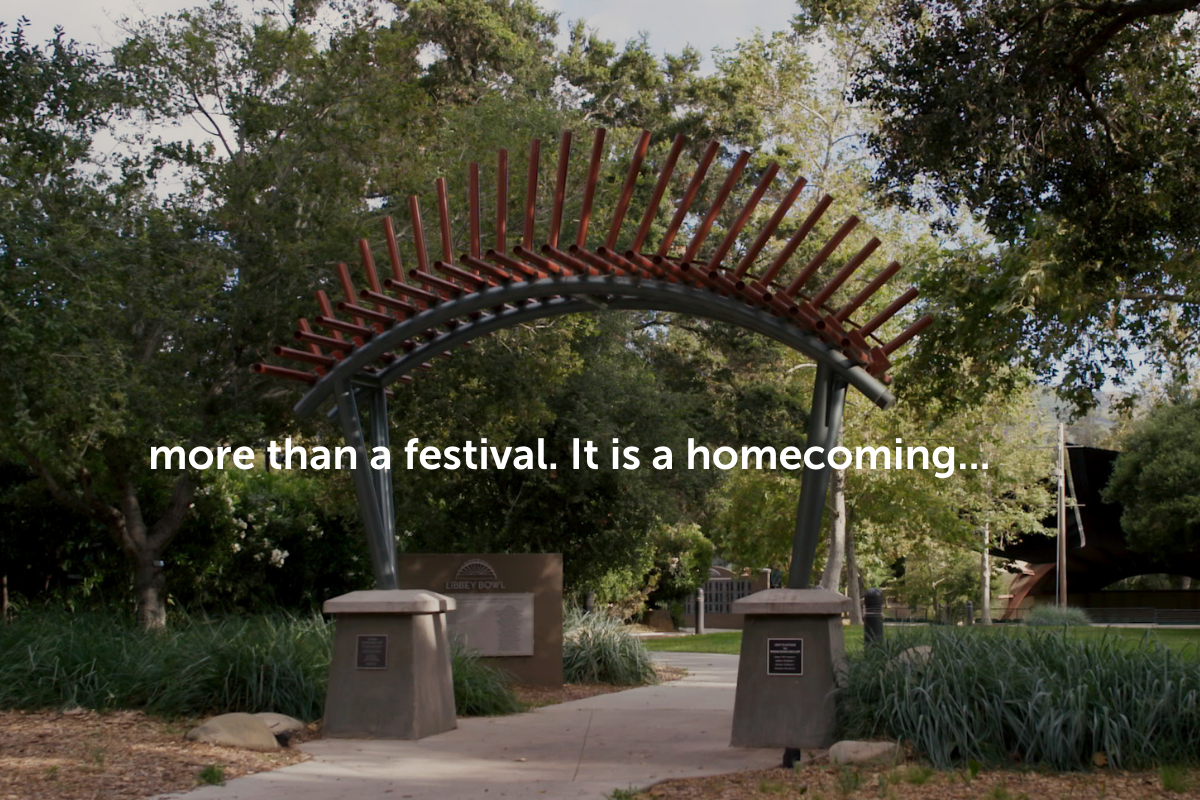It is more than a festival. It is a homecoming, the recognition of a bond. On rough wooden benches — back in the day — or stretched out on the lawn, settled on a blanket, families in tow, this is a kindred fellowship, both alert and at ease. Performers get it right away because it only takes a rehearsal or two to realize that here it’s different. Young composers, cradling their newborn, often take more time. But after the jitters and anxieties of a premiere or first performance they look around and see where they are and are transformed.
For all the unseen planning of a dedicated staff (or more likely because of it) — Ojai always feels improvised, something that just happens. How easily conversations begin, over a new work, a performance, or this and that. Introductions come later, maybe after a year or two with a “remember when.” Then casual acquaintance blossoms into friendship. Yes, that’s a big part of it, the shared memories, something even initiates pick up on, when on Sunday they look back on Friday and the distance travelled in between. Something, too, about the place, the trees, the hills, the soft mists in the morning, the beating sun at noon, the evening chill. Old-timers know to come prepared, newcomers learn quickly. Then we leave, disperse, maybe one last meal and the long drive back, envying those who call Ojai home.
There are regulars, of course, true believers who attend every event. For others, however, Ojai is a smorgasbord — up for a day, perhaps, or an afternoon, or some years not at all. No matter; we all come back sooner or later, a habit formed through decades. Naturally, there have been changes. Time was, the festival was a simpler affair. Three days, five or six concerts; lots of time to spare, to chat, shop, a leisurely coffee, a bookstore browse, perhaps a walk, or bike ride. Back then Ojai sometimes felt like a coda to the Los Angeles season, to the Monday Evening Concerts, or the concerts of the Philharmonic, a showcase for the Southland’s finest, under the guidance, among others, of Lawrence Morton, Igor Stravinsky, Aaron Copland, Lukas Foss, Ingolf Dahl, Pierre Boulez, Ernest Fleischmann, not to mention resident composers such as Messiaen, Carter, or Kurtág — the legacies of giants. There was never a formula, a fixed agenda. There was freedom to pick, choose, and explore; to address the cultural and political preoccupations of the moment, to dare something new, to cozy up to something familiar, to be unapologetically eclectic. Ojai, as John Henken has written, “was always ahead of the counter- and multi-cultural curve.” Theater, dance, opera, non-Western music, and jazz have long been part of the mix. Just one thing: The music comes first.
by Christopher Hailey
Special thanks to Art Mentor Foundation Lucerne for their support of the Festival’s 75th anniversary season

